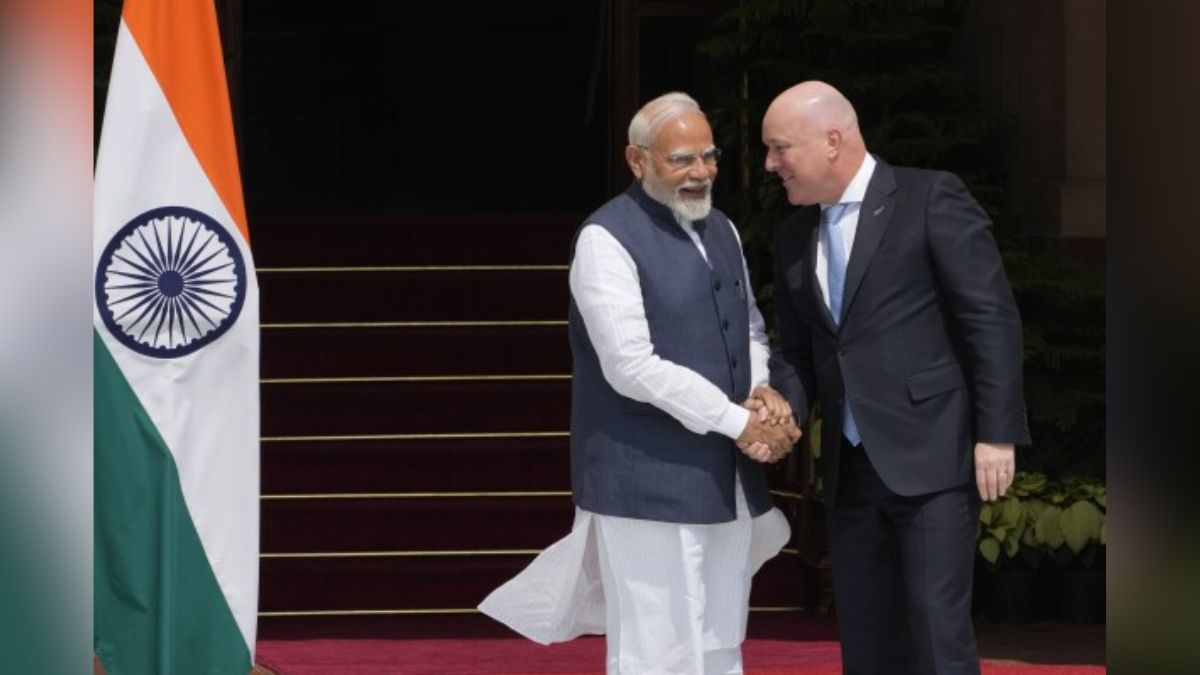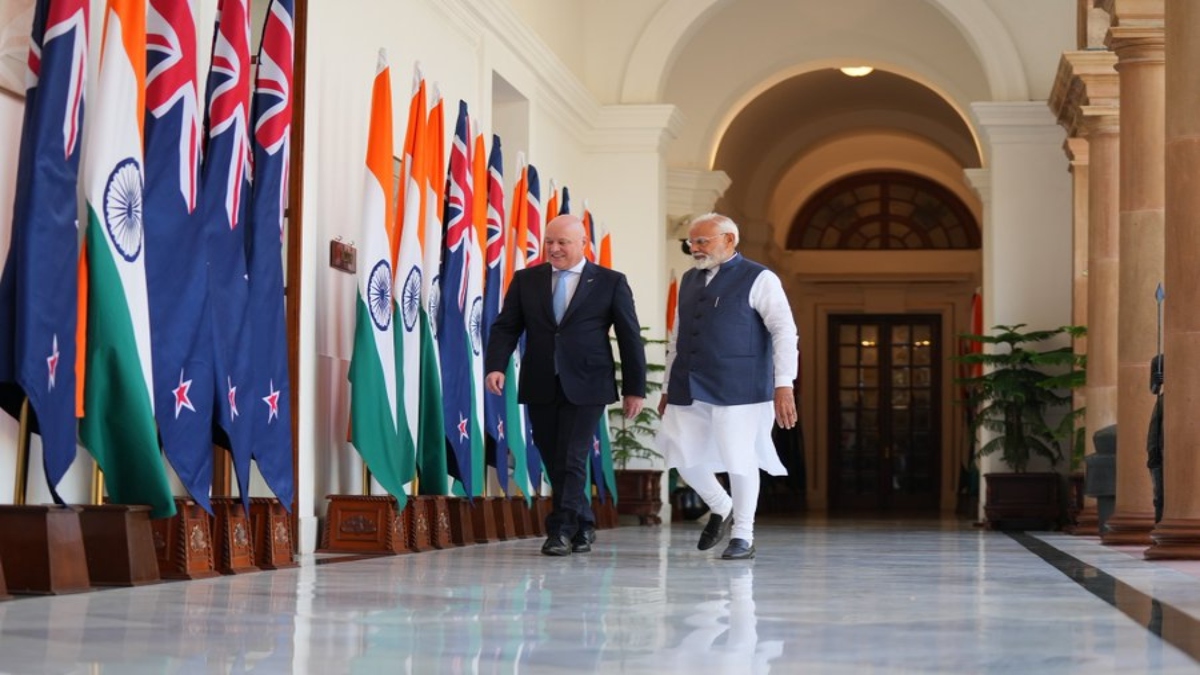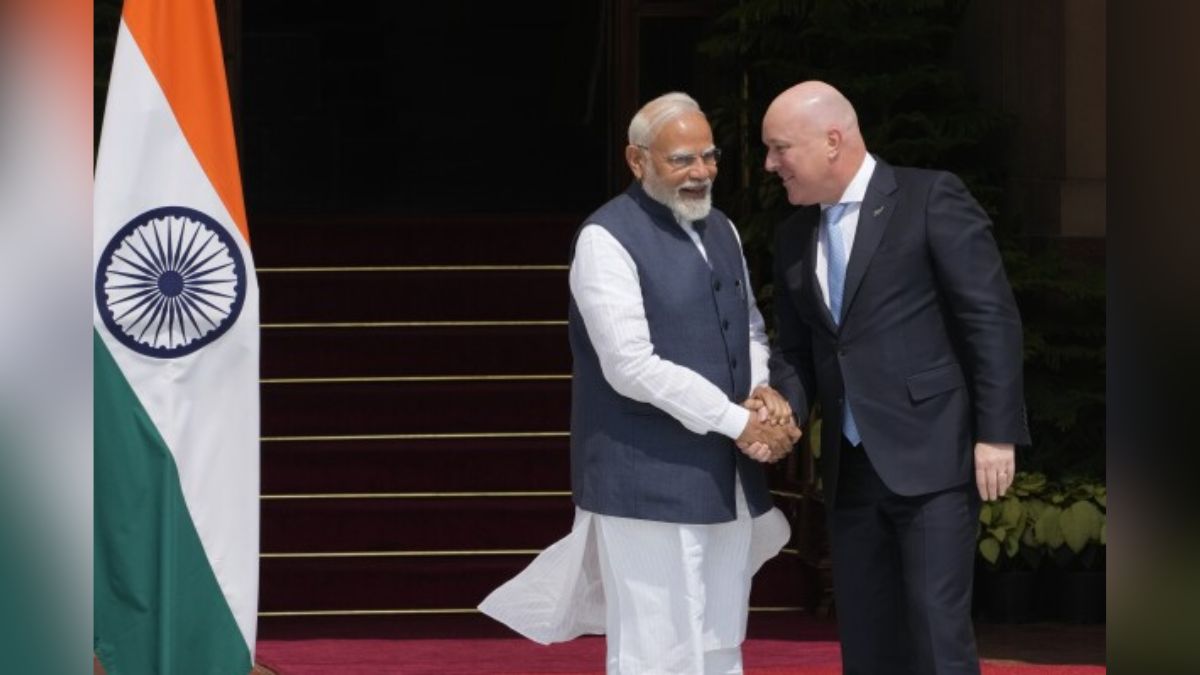The rise of China and its increasingly assertive posture have made the Indo-Pacific region the most significant geopolitical theatre today. Almost every single power, ranging from Asia to Europe, along with the US, is taking an active interest in the region.
Naturally, even the slightest news from this theatre becomes a topic of debate, with geopolitical watchers closely analysing what it means for the strategic future of the region.
This week, a report published by the British daily Financial Times has generated a similar spark with its claim that AUKUS, the military agreement between Australia, the UK, and the US, may be expanded to include Japan as well. If this materialises and the grouping indeed becomes JAUKUS, India will be the only Quad member to be ‘left behind’.
While the exclusion of India from the original AUKUS had already led many in the strategic circles to point out that India doesn’t enjoy the West’s confidence to counter China, now this development, along with the consecutive delay in Quad summits, is creating a similar doubt over India’s role in the Indo-Pacific region. However, in this piece, I argue that all such apprehensions regarding India’s future role in the region are misplaced.
The AUKUS grouping
The AUKUS grouping is not a military treaty or a pact but a simple agreement among the US, UK, and Australia, three countries that already share a close bilateral relationship with each other, to cooperate more closely in the Indo-Pacific as part of a trilateral security framework.
It actually builds on the narrow objective of the US and the UK to equip Australia with nuclear-powered submarines. The AUKUS was announced in September 2021 when Australia ditched its decade-long efforts to secure submarines from France’s Naval Group and, under former Prime Minister Scott Morrison, instead turned towards the US and the UK. The country was seeking more lethal and more powerful nuclear-powered submarines as against conventional ones due to the changing situation in the Indo-Pacific region.
Sensing the opportunity, the UK and the US filled in the gap, and a quick trilateral discussion took place on the sidelines of the G7 summit in June 2021 in Cornwall, England.
Since then, they have agreed to share nuclear propulsion technology with Australia, along with the sale of a few Virginia-class submarines by the US, the co-development of a submarine by the UK and Australia, as well as a multi-dollar pledge by them to expand their trilateral submarine industrial base.
The commitments related to submarines form ‘Pillar 1’ of the AUKUS agreement. Now these countries are considering moving towards ‘Pillar 2’, a cooperation focusing on advanced defence technologies such as quantum technology, hypersonic missiles, and artificial intelligence.
It is for this initiative that the original AUKUS countries are seeking to cooperate with Japan. However, a formal expansion of the grouping is not on the cards yet, with specific defence technology projects more in the offing.
This was hinted at by the US’s Deputy Secretary of State Kurt Campbell, who said Japan will be considered rather as a ‘technological partner’ along with Australian Prime Minister Antony Albanese’s straight denial of Japan as the fourth partner at a press conference called on Tuesday. A reason for these countries to downplay Japan’s participation may be to avoid any more tensions with Beijing.
The US is already involved in two wars, one in West Asia (in Israel’s support) and another between Ukraine and Russia. It is looking to avoid another one with China over Taiwan. However, AUKUS is all set to complete its third year in September, and the member countries think that the involvement of more partners will increase its potential.
This brings us to the question of the relevance of Quad, another US-led minilateral in the region, and also of India, which is still not part of any arrangement at the AUKUS.
India’s Cherished Strategic Autonomy
Well, despite the economic imperative implicit in the creation of the AUKUS, where the submarine deal is going to cost a whopping US$240 billion, the grouping also has a strategic imperative in addressing the elephant in the room—China.
With a rising and increasingly aggressive China, Australia felt the need to acquire nuclear-powered submarines to ensure its part of the Indo-Pacific remained free and open. However, Australia’s admission into the AUKUS trinity has come with reciprocal expectations. While speaking to a US-based think tank last week, Kurt Campbell spilled the beans on what the US wants in exchange for the submarine deal from Australia. Although domestically, Australian Prime Minister Albanese has presented the submarine deal as a job-creation scheme, as per Campbell, the submarines are part of a coordinated plan to fight China in the Taiwan Strait. Meanwhile, PM Albanese and his Defence Minister Richard Marles have also assured their people that the submarines will be thoroughly under Australia’s sovereign control and prove to be its ‘sovereign asset’.
However, according to insiders who were privy to Campbell’s similar assertion at a EU meeting in 2022, the AUKUS has got Australia “off the fence” and “locked in” the country for the next forty years into cooperating with the US in a theatre of its choosing. This expectation of the US from Australia clearly takes a huge chunk of its strategic autonomy away.
Any mention of ‘strategic autonomy’ withering away will put India in an uncomfortable position. India has shown a historic aversion to being a part of military alliances. This is a stand that it continues to reiterate even today. Despite this, India, due to its widening power gap and increasingly tense relations with China, does want to externally balance the country, which explains its joining the Quadrilateral grouping with the US, Japan, and Australia. However, when it comes to military action in the Taiwan Strait, New Delhi has yet to make up its mind.
For India, the primary theatre of military action to deal with China remains its own unsettled boundary, where the Line of Actual Control has witnessed multiple incursions in the last two decades by China.
In addition to this, India’s focus is on the ‘Indian Ocean’ component of the Indo-Pacific region. As the resident naval power in the region, India is playing a significant role as the preferred security partner. Its current job brief is to deter Beijing from becoming a dominant non-resident naval power in the region. In such a scenario, the Taiwan Strait obviously does not enjoy a prime position in New Delhi’s calculations. However, that reality is slowly changing with China’s increasing aggression and expansionism against India.
For the first time, India made a remark with regards to the ‘militarisation of Taiwan Strait’ by China in 2022 when a Chinese research vessel docked at Sri Lanka’s Colombo port. Similarly, Prime Minister Modi also expressed solidarity with the people of Taiwan when it faced a deadly earthquake in the first week of April on social media platform X, just after China issued a list of names for places in Arunachal Pradesh.
In the future, India may take more interest in the conflict in the Taiwan Strait and may even play a greater military role. This would be part of its strategy to deter China in view of increased militarisation of the Indian Ocean region. But for the foreseeable future, this strategy will not involve India participating in a military alliance such as the AUKUS.
Australia is a part of the Five Eyes alliance with the US and the UK, and these countries have a history of military pacts. India is more likely to preserve its strategic autonomy and avoid participation in such alliances. Especially in view of the events that took place after a war broke out between Russia and Ukraine. India’s strategic independence allowed it to import discounted oil to protect its economic interests as a developing country. As a $3.7 trillion economy looking to reach at least $10 trillion in the next decade, India’s foreign policy goals are going to be conservative.
This then brings us to the question: If the US, Australia, and now Japan are devoting their energy to the AUKUS, then is the Quad grouping irrelevant? Not at all.
Unlike the limited focus of the AUKUS on military cooperation and the geographical theatre of the Taiwan Strait, Quad is an initiative rooted in democratic values to promote overall peace and stability in the region.
The AUKUS had its origins in a submarine deal, but Quad originated from a vision that foresaw the rise of India and China as the ultimate geopolitical reality in the Indo-Pacific region.
Quad may have lost space in the news cycle off late, but it has more to do with the US’s domestic compulsions in an election year and its attention to other theatres such as Eastern Europe and West Asia. In fact, even India would appreciate and welcome any development in AUKUS because it is bringing the focus back to the Indo-Pacific.
Meanwhile, beyond any of the US-led minilaterals in the region, India’s only choice in the long term is to increase its own capability.
Its challenges with regards to China’s rise are much different and more dangerous than any of the Quad or AUKUS countries. India is anyway looking to indigenously develop a nuclear attack submarine capability, as its Naval Chief Admiral R Hari Kumar also highlighted last month. India would indeed want to be in a league of its own, and it wouldn’t sacrifice its strategic autonomy at the altar of any alliance compulsions.
The author is a New Delhi-based commentator on geopolitics and foreign policy. She holds a PhD from the Department of International Relations, South Asian University. You may follow her on X: @TrulyMonica. The views expressed in the above piece are personal and solely those of the author. They do not necessarily reflect Firstpost’s views.


)
)
)
)
)
)
)
)
)



